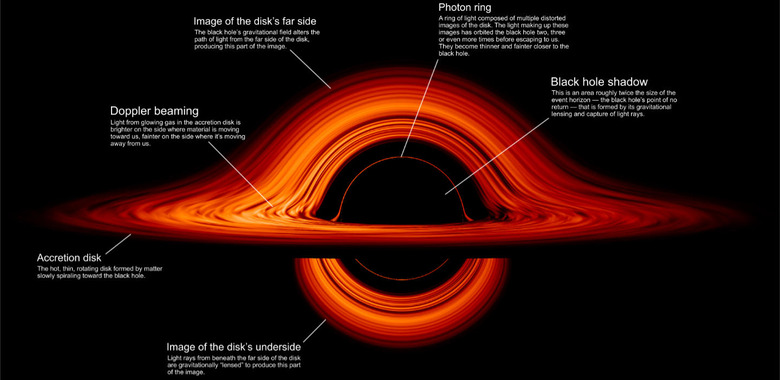NASA's new black hole visualization shows 'carnival mirror' effect
NASA has released a stunning new high-resolution visualization of a black hole, specifically how its gravity distorts the way it looks. NASA describes this warping effect as similar to what one would see when looking in a carnival mirror, skewing light, twisting the appearance of surrounding material, and forming what appears to be light and dark 'lanes' in the accretion disk.
A black hole has extreme gravity, according to NASA, which bends the light coming from different parts of the disc surrounding it. This light alteration results in a warped image from the perspective of someone on the outside; the distortion effect is most prominent when viewed from close to the edge of the disc.

Note: An animated version of the visualization can be viewed on NASA's website here.
The distortion impacts more than just the appearance of the ring; NASA points out that the left side of the disk looks brighter than the right because the part moving toward the viewer gives the brightness a 'boost,' something that is reversed as the disk moves away from the viewer on the right.
The part of the disk that appears to be outlining the black hole is actually the underside of the ring, according to NASA; this, too, is because of extreme light-bending caused by the black hole's gravity. The appearance would look the same when viewed from any angle.
NASA Goddard Space Flight Center's Jeremy Schnittman explained:
Simulations and movies like these really help us visualize what Einstein meant when he said that gravity warps the fabric of space and time. Until very recently, these visualizations were limited to our imagination and computer programs. I never thought that it would be possible to see a real black hole.
